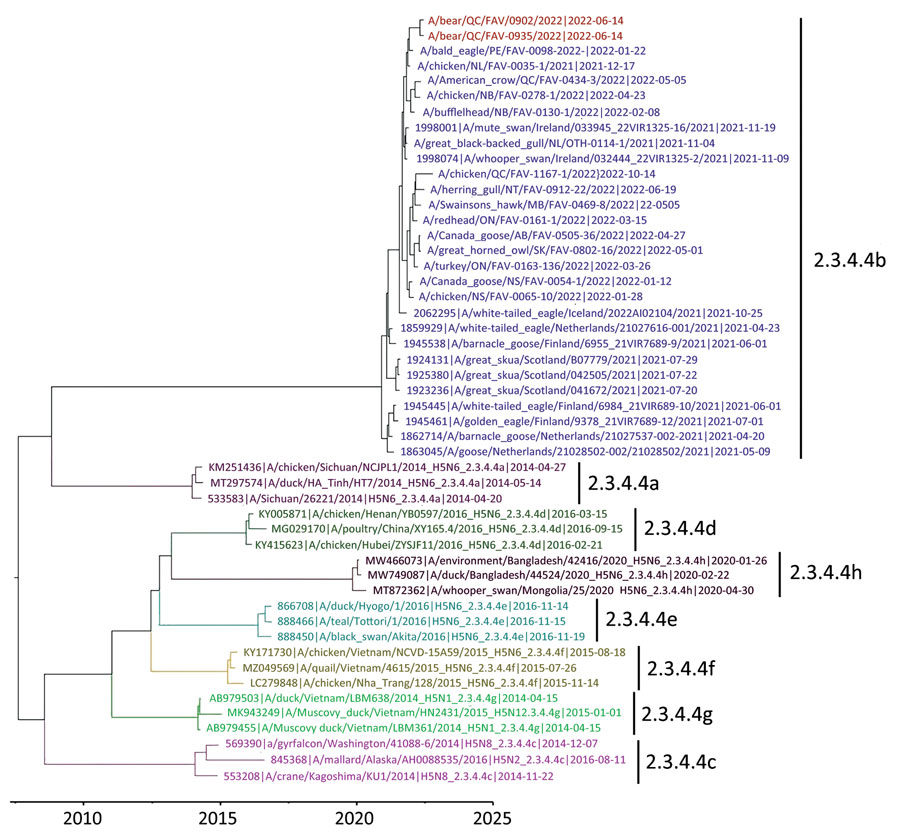Volume 29, Number 10—October 2023
Dispatch
Influenza A(H5N1) Virus Infections in 2 Free-Ranging Black Bears (Ursus americanus), Quebec, Canada
Figure 2

Figure 2. Maximum-clade credibility tree for influenza A virus antigen in black bears by immunohistochemical analysis, Quebec, Canada, inferred by using Bayesian and Markov Chain Monte Carlo analyses for the H5 hemagglutinin gene. Shown are relationships among black bear strains from this investigation (red), European 2021 H5 clade 2.3.4.4b HPAI strains (blue), and early Canada wild bird and poultry strains (purple). Colors and labels indicate the other H5 clade 2.3.4.4 subgroups.
Page created: August 15, 2023
Page updated: September 20, 2023
Page reviewed: September 20, 2023
The conclusions, findings, and opinions expressed by authors contributing to this journal do not necessarily reflect the official position of the U.S. Department of Health and Human Services, the Public Health Service, the Centers for Disease Control and Prevention, or the authors' affiliated institutions. Use of trade names is for identification only and does not imply endorsement by any of the groups named above.